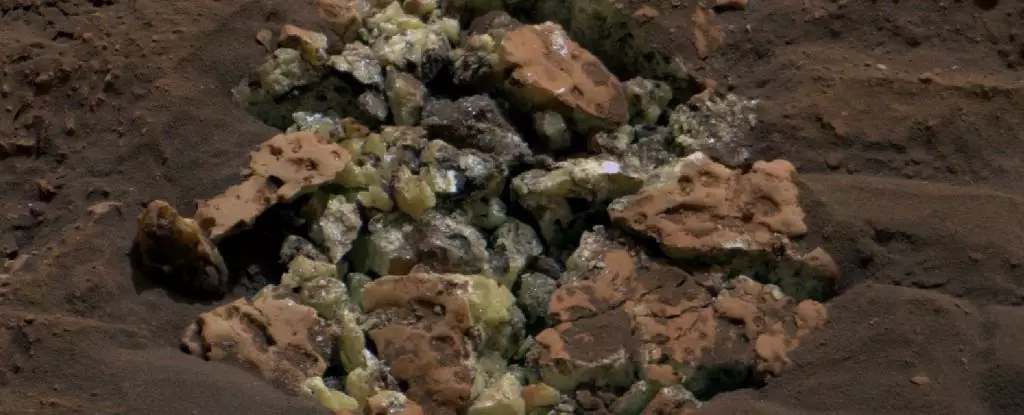The recent discovery made by Curiosity, the rover on Mars, has left scientists astounded. As the rover rolled over a seemingly ordinary rock on the surface of Mars, it inadvertently cracked it open, exposing a mesmerizing sight – yellow crystals of elemental sulfur, also known as brimstone. While sulfates are not uncommon on Mars, the presence of pure elemental sulfur in its natural form is a groundbreaking revelation. This unexpected finding has sparked a wave of curiosity and raised questions about the geological history of Mars.
The Gediz Vallis Channel, where Curiosity stumbled upon the sulfur rock, is now under intense scrutiny. The landscape is dotted with rocks that closely resemble the sulfur rock before it was fractured, hinting at the possibility of an abundance of elemental sulfur in certain areas of Mars. Project scientist Ashwin Vasavada aptly describes this discovery as finding an “oasis in the desert” due to its rarity and unexpected nature. The presence of pure sulfur poses a challenge to scientists to explain its origin within the context of Martian geology.
Sulfates, formed when sulfur interacts with other minerals in water, offer valuable insights into the water history and environmental changes on Mars. However, pure sulfur only occurs under specific conditions that have not yet been documented in the region where Curiosity made its discovery. The significance of this finding lies in the implications it holds for the potential existence of unknown geological processes on Mars.
Sulfur plays a crucial role in the biochemical processes of living organisms, serving as a fundamental element in the synthesis of essential amino acids for protein production. While the discovery of sulfates has long been documented on Mars, the presence of elemental sulfur raises intriguing questions about the planet’s past habitability and the potential for supporting life. Despite the absence of direct evidence of life on Mars, the recurring traces of life-supporting elements continue to captivate researchers.
The journey of exploration on Mars has just begun, with each discovery raising new avenues of research and investigation. The next phase of study will involve delving deeper into the geological evolution of Mars to unravel the mysteries surrounding the presence of sulfur on its surface. Detailed modeling and analysis will play a crucial role in deciphering the complex geological processes that have shaped the Martian landscape over billions of years.
As Curiosity continues its mission in the Gediz Vallis Channel, the rover remains a beacon of hope for uncovering more secrets hidden beneath the Martian soil. By collecting data and conducting chemical analyses, Curiosity aims to shed light on the ancient waterways and geological formations that hold clues to Mars’s enigmatic past. With each step forward, new revelations await, hinting at the possibility of unlocking the mysteries of our neighboring planet.


Leave a Reply